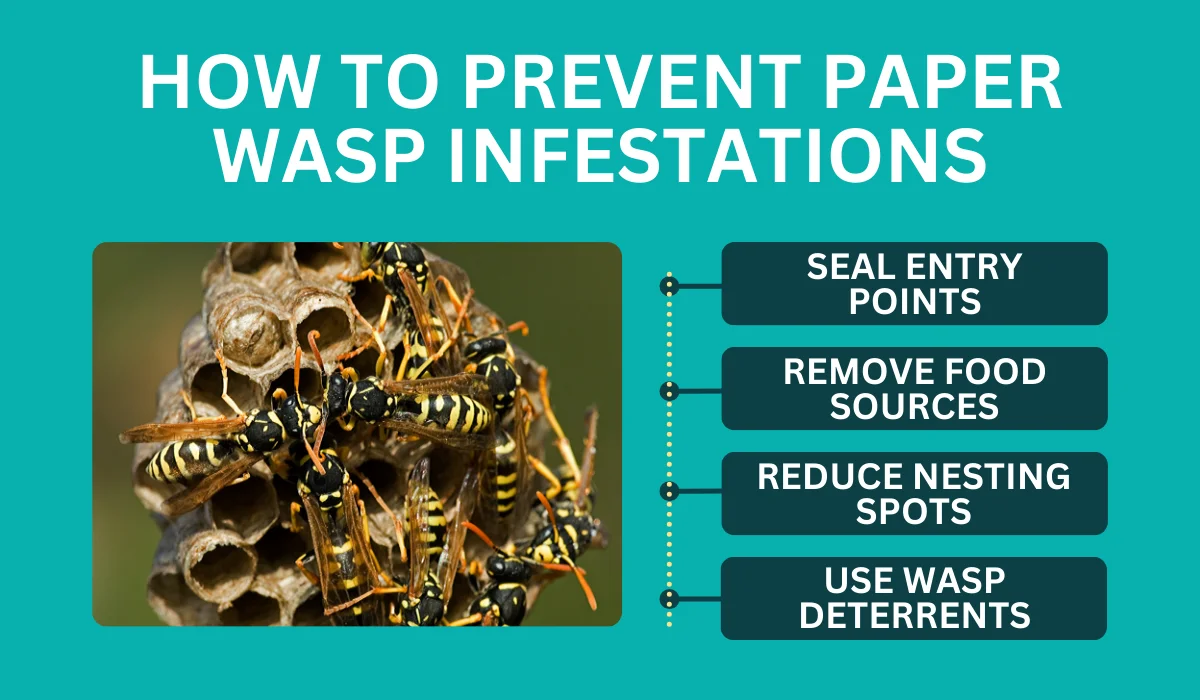What to Know About Paper Wasps in Florida
If you live in Florida, chances are you've come across paper wasps at some point. These social wasps are common throughout the state and often build their nests around homes, making them a frequent concern for homeowners.
While they play an essential role as pollinators and natural pest controllers, their painful stings can be a problem—especially if you have an allergic reaction.
So, what should you know about paper wasps in Florida? Let’s take a closer look at their behavior, nesting habits, and how to manage them safely.
Key Takeaways
- Paper wasps are social insects with umbrella-shaped nests and are usually less aggressive unless their nest is disturbed.
- They have slender bodies, long legs, brownish or reddish coloring, and build papery nests in sheltered areas around homes.
- Their stings are painful and can cause redness, swelling, and allergic reactions, and they can sting multiple times.
- Prevent wasps by sealing cracks, removing food, trimming branches, using deterrents, and calling professionals for large nests.
What Are Paper Wasps?
Paper wasps belong to the Polistes genus, a group of social wasps known for their distinctive, umbrella-shaped nests. They are sometimes confused with yellow jackets and hornets, but they are usually less aggressive unless their nest is disturbed.
How to Identify Paper Wasps
Paper wasps have a few key features that set them apart from other types of wasps:
- Slender bodies with long legs that dangle in flight
- Brownish or reddish coloring with yellow markings
- Narrow thorax and abdomen, giving them an elongated appearance
- Umbrella-shaped nests made from chewed-up wood fibers
Unlike solitary wasps like cicada killers and mud daubers, these social insects live in small colonies and work together to build and protect their nests.
Where Do Paper Wasps Build Their Nests?
Paper wasps are often found nesting in areas that provide some shelter from the elements. Common nesting sites include:
- Under eaves and overhangs
- Inside attics
- On tree branches
- Around window frames or doorways
- Under deck railings or porch ceilings
These wasps build their nests from a papery material they create by chewing wood fibers and mixing them with their saliva. This results in the familiar open-comb structure that hangs from a single stalk.
Are Paper Wasps Dangerous?
While paper wasps are not as aggressive as some other species of wasps, they will sting if they feel their nest is threatened.
Only female wasps can sting, as males do not have stingers. Their stings are painful and can cause redness, swelling, and itching. If you’re allergic, it can lead to a severe reaction, including difficulty breathing and swelling of the throat.
Unlike honey bees, they do not lose their stinger, meaning they can sting multiple times. If you get stung and experience any signs of an allergic reaction after the wasp sting, seek medical attention immediately.
How to Prevent Paper Wasp Infestations

If you want to keep your home pest-free, here are some steps you can take to prevent paper wasps from building nests around your property:
1. Seal Entry Points
Check your home’s exterior for cracks, gaps, or holes where wasps might enter, especially around attics, eaves, and vents.
2. Remove Food Sources
Paper wasps are attracted to sweet foods and proteins, including caterpillars and other insect larvae that might end up in trash bins, so keep these sealed and clean up any food spills outside.
3. Reduce Nesting Spots
Keep tree branches trimmed away from your home. Regularly inspect under eaves and other sheltered areas. If you notice a small nest forming in the spring, remove it early before it grows.
4. Use Wasp Deterrents
Hang decoy wasp nests—paper wasps are territorial and will avoid areas where they think another colony is established. You can also apply natural deterrents like peppermint oil around common nesting sites to repel them.
What to Do If You Have a Wasp Infestation
If you find a large paper wasp nest on your property, it’s best to contact a professional pest control service rather than trying to remove it yourself.
At Native Pest Management, we offer safe and effective wasp control services throughout Florida. Our experienced team can identify, remove, and prevent wasp infestations, keeping your home and family safe.
If you need expert wasp control, reach out to us now for professional services tailored to your home.